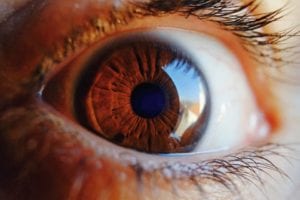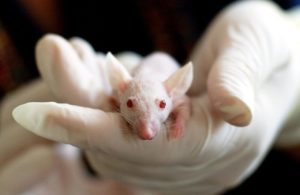Retinitis Pigmentosa
What is Retinitis Pigmentosa?
Retinitis pigmentosa refers to a group of inherited diseases causing retinal degeneration. The retina is a thin piece of tissue lining the back of the eye. It converts light into electrical signals that the brain interprets as vision.
People with retinitis pigmentosa experience a gradual decline in their vision, because photoreceptor cells in the retina degenerate.
Forms of retinitis pigmentosa and related diseases include Usher syndrome, Leber congenital amaurosis, and Bardet-Biedl syndrome, among others.
What are the symptoms of Retinitis Pigmentosa?
Symptoms depend on whether rods or cones are initially involved. In most forms of retinitis pigmentosa, rods are affected first. Because rods are concentrated in the outer portions of the retina and are triggered by dim light, their degeneration affects peripheral and night vision.
When the disease progresses and cones become affected, visual acuity, color perception, and central vision are diminished. Night blindness is one of the earliest and most frequent symptoms. People with mainly cone degeneration, however, first experience decreased central vision and reduced ability to discriminate colors and perceive details.
It is a progressive disorder. The rate of progression and degree of visual loss varies from person to person. Most people with are legally blind by age 40, with a central visual field of less than 20 degrees in diameter.
What causes Retinitis Pigmentosa?
Mutations in more than 60 genes are known to cause nonsyndromic retinitis pigmentosa. More than 20 of these genes are associated with the autosomal dominant form of the disorder.
Mutations in the RHO gene are the most common cause of autosomal dominant retinitis pigmentosa, accounting for 20-30 % of all cases. At least 35 genes have been associated with the autosomal recessive form of the disorder.
In autosomal recessive retinitis pigmentosa, both parents carry one copy of the mutated gene, but have no symptoms themselves. Children have a 25 % chance of being affected by inheriting a mutated copy from each parent.
In autosomal dominant retinitis pigmentosa, usually one parent is affected and is the only parent with a mutated gene. A child has a 50% chance of being affected through the inheritance of the mutated gene from the parent.
In families with X-linked retinitis pigmentosa, the mother carries the mutated gene on an X chromosome, and her sons have a 50 percent chance of inheriting the condition. Daughters have a 50% chance of becoming carriers and aren’t usually affected. However, some daughters are affected — sometimes mildly, sometimes severely.
How is Retinitis Pigmentosa diagnosed?
Retinitis pigmentosa is diagnosed in part through a retina exam. An eye care professional will use an ophthalmoscope, a tool that allows for a wider, clear view of the retina. This typically reveals abnormal, dark pigment deposits that streak the retina. These pigment deposits are in part why the disorder was named retinitis pigmentosa.
Other tests include:
- Electroretinogram (ERG). An ERG measures the electrical activity of photoreceptor cells. This test uses gold foil or a contact lens with electrodes attached. A flash of light is sent to the retina and the electrodes measure rod and cone cell responses. People with retinitis pigmentosa have a decreased electrical activity, reflecting the declining function of photoreceptors.
- Visual field testing. To determine the extent of vision loss, a clinician will give a visual field test. The person watches as a dot of light moves around the half-circle (180 degrees) of space directly in front of the head and to either side. The patient pushes a button to indicate that he or she can see the light. This process results in a map of their visual field and their central vision.
- Genetic testing. In some cases, a clinician takes a DNA sample from the person to give a genetic diagnosis. In this way a person can learn about the progression of their particular form of the disorder.
What are the treatments for Retinitis Pigmentosa?
There is no cure or treatment specifically for retinitis pigmentosa, but there are ways to manage many of the symptoms, per the doctor’s advice and direction.
Where can I find out more about Retinitis Pigmentosa?
Retinitis Pigmentosa Articles

Congressional Briefing Highlights Impact of Research Funding on Rare Eye Diseases: Retinitis Pigmentosa and Stargardt Disease

Doctors Use Luxturna to Restore Vision in 6-Year-Old with RP

Study of the Week: Using Deep Learning to Track Retinitis Pigmentosa Progression


EA-2353 for Retinitis Pigmentosa (RP) Granted Fast Track Designation

Traveling the World Before Retinitis Pigmentosa Takes Their Sight





